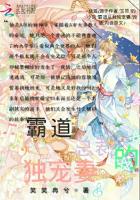By EDUARD STRASBURGER, Professor of Botany in the University of Bonn.
Since 1875 an unexpected insight has been gained into the internal structure of cells. Those who are familiar with the results of investigations in this branch of Science are convinced that any modern theory of heredity must rest on a basis of cytology and cannot be at variance with cytological facts. Many histological discoveries, both such as have been proved correct and others which may be accepted as probably well founded, have acquired a fundamental importance from the point of view of the problems of heredity.
My aim is to describe the present position of our knowledge of Cytology.
The account must be confined to essentials and cannot deal with far-reaching and controversial questions. In cases where difference of opinion exists, I adopt my own view for which I hold myself responsible. I hope to succeed in making myself intelligible even without the aid of illustrations: in order to convey to the uninitiated an adequate idea of the phenomena connected with the life of a cell, a greater number of figures would be required than could be included within the scope of this article.
So long as the most eminent investigators (As for example the illustrious Wilhelm Hofmeister in his "Lehre von der Pflanzenzelle" (1867).) believed that the nucleus of a cell was destroyed in the course of each division and that the nuclei of the daughter-cells were produced de novo, theories of heredity were able to dispense with the nucleus. If they sought, as did Charles Darwin, who showed a correct grasp of the problem in the enunciation of his Pangenesis hypothesis, for histological connecting links, their hypotheses, or at least the best of them, had reference to the cell as a whole. It was known to Darwin that the cell multiplied by division and was derived from a similar pre-existing cell. Towards 1870 it was first demonstrated that cell-nuclei do not arise de novo, but are invariably the result of division of pre-existing nuclei. Better methods of investigation rendered possible a deeper insight into the phenomena accompanying cell and nuclear divisions and at the same time disclosed the existence of remarkable structures. The work of O. Butschli, O. Hertwig, W. Flemming H. Fol and of the author of this article (For further reference to literature, see my article on "Die Ontogenie der Zelle seit 1875", in the "Progressus Rei Botanicae", Vol. I. page 1, Jena, 1907.), have furnished conclusive evidence in favour of these facts. It was found that when the reticular framework of a nucleus prepares to divide, it separates into single segments. These then become thicker and denser, taking up with avidity certain stains, which are used as aids to investigation, and finally form longer or shorter, variously bent, rodlets of uniform thickness. In these organs which, on account of their special property of absorbing certain stains, were styled Chromosomes (By W. Waldeyer in 1888.), there may usually be recognised a separation into thicker and thinner discs; the former are often termed Chromomeres. (Discovered by W.
Pfitzner in 1880.) In the course of division of the nucleus, the single rows of chromomeres in the chromosomes are doubled and this produces a band-like flattening and leads to the longitudinal splitting by which each chromosome is divided into two exactly equal halves. The nuclear membrane then disappears and fibrillar cell-plasma or cytoplasm invades the nuclear area. In animal cells these fibrillae in the cytoplasm centre on definite bodies (Their existence and their multiplication by fission were demonstrated by E. van Beneden and Th. Boveri in 1887.), which it is customary to speak of as Centrosomes. Radiating lines in the adjacent cell-plasma suggest that these bodies constitute centres of force. The cells of the higher plants do not possess such individualised centres; they have probably disappeared in the course of phylogenetic development: in spite of this, however, in the nuclear division-figures the fibrillae of the cell-plasma are seen to radiate from two opposite poles. In both animal and plant cells a fibrillar bipolar spindle is formed, the fibrillae of which grasp the longitudinally divided chromosomes from two opposite sides and arrange them on the equatorial plane of the spindle as the so-called nuclear or equatorial plate. Each half-chromosome is connected with one of the spindle poles only and is then drawn towards that pole. (These important facts, suspected by W. Flemming in 1882, were demonstrated by E.
Heuser, L. Guignard, E. van Beneden, M. Nussbaum, and C. Rabl.)The formation of the daughter-nuclei is then effected. The changes which the daughter-chromosomes undergo in the process of producing the daughter-nuclei repeat in the reverse order the changes which they went through in the course of their progressive differentiation from the mother-nucleus.
The division of the cell-body is completed midway between the two daughter-nuclei. In animal cells, which possess no chemically differentiated membrane, separation is effected by simple constriction, while in the case of plant cells provided with a definite wall, the process begins with the formation of a cytoplasmic separating layer.
The phenomena observed in the course of the division of the nucleus show beyond doubt that an exact halving of its substance is of the greatest importance. (First shown by W. Roux in 1883.) Compared with the method of division of the nucleus, that of the cytoplasm appears to be very simple.
This led to the conception that the cell-nucleus must be the chief if not the sole carrier of hereditary characters in the organism. It is for this reason that the detailed investigation of fertilisation phenomena immediately followed researches into the nucleus. The fundamental discovery of the union of two nuclei in the sexual act was then made (By O.















